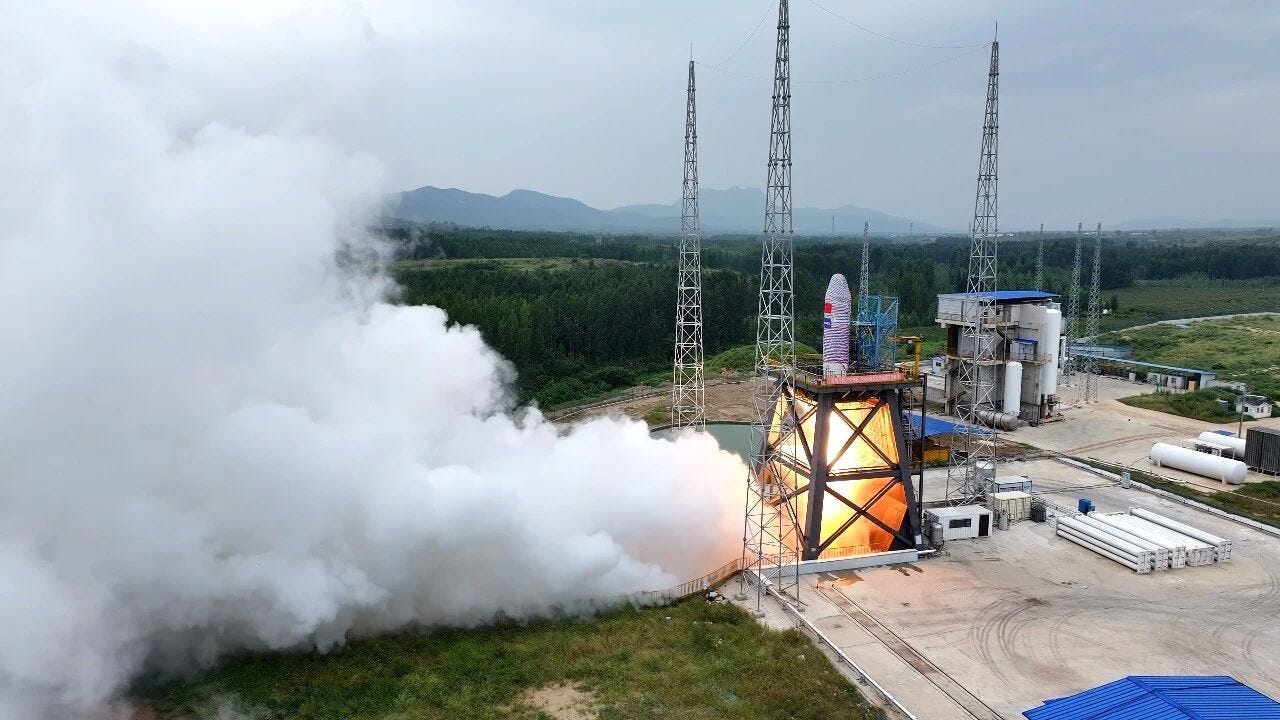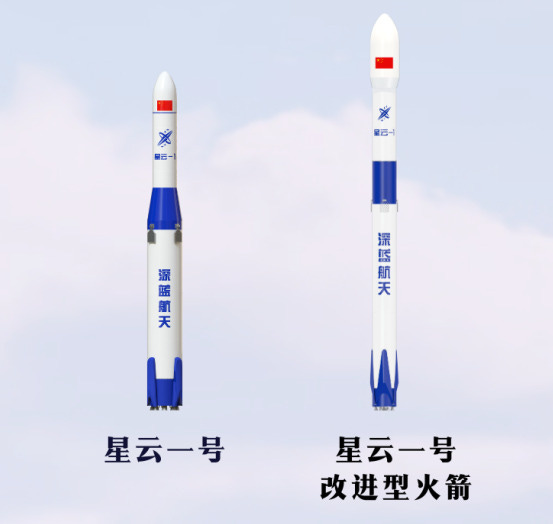Nebula-1's Second-Stage Conducts Static Fire Ahead of Launch Campaign
Deep Blue Aerospace still wants to fly the small-lift reusable rocket.
Deep Blue Aerospace announced on September 30th that Nebula-1’s second-stage had completed a static fire ahead of the rocket's debut flight.
Nebula-1’s latest test utilized the company’s Thunder-R engine in its vacuum-optimized variant, burning rocket-grade kerosene and liquid oxygen to generate 21.1 tons of thrust, for a 308-second-long (five minutes and eight seconds) firing.
According to the company, the second-stage test firing demonstrated a flight-like burn with startup, shutdown, and various thrust levels, while verifying the stage’s design across critical areas. The test validated propellant loading procedures, interfaces between components, and mechanical stresses experienced during pre-launch and flight. Both propellants acted as expected, with their tanks’ pressurization systems maintaining stable pressure throughout the 308-second firing.
Nebula-1’s second-stage firing also confirmed the stage’s cryogenic performance from propellant loading to safing. Data gathered during the test was within expected limits, with all systems working in coordination through a simulated flight profile.
Deep Blue Aerospace says that the second-stage has proven its reliability through the ground test, making it ready for orbital flight. Although the rocket’s debut flight will need a first-stage, and its development has been fairly quiet since last year.
In September 2024, Nebula-1’s vertical-takeoff vertical-landing test vehicle performed an almost completely successful hop test under the power of three Thunder-R engines, falling onto its landing pad after software misunderstood the altitude in a remote region near the Jiuquan Satellite Launch Center. In July or August, the hop was reattempted with a new vehicle, which veered off course following launch, crashing 630 meters away based on satellite imagery. Since then, no word has been said on the development of Nebula-1’s reusable first-stage boosters.
Back in March, Deep Blue Aerospace had set mid-2025 as their target to launch Nebula-1 into orbit, likely from the Wenchang Commercial Space Launch Site’s Commercial Launch Pad 2. As the middle of the year has come and gone with no new target provided, at best, the rocket may fly before the end of the year, but it is more likely that Nebula-1 will fly in 2026.
At the same time as Nebula-1 is trying to perform its first launch, Deep Blue Aerospace is working to upgrade the rocket through a new variant. In its current design, Nebula-1 features a 3.35-meter-diameter first-stage and a 2.25-meter-wide second-stage, utilizing nine Thunder-R engines on the first-stage, to send 2,000 kilograms into low Earth orbit. After a few flights in its current design, the company plans to introduce Nebula-1B, which will stretch the first-stage, equip it with eleven Thunder-R engines, and widen the second-stage to 3.35 meters, allowing the rocket to carry at least an extra 1,000 kilograms.




